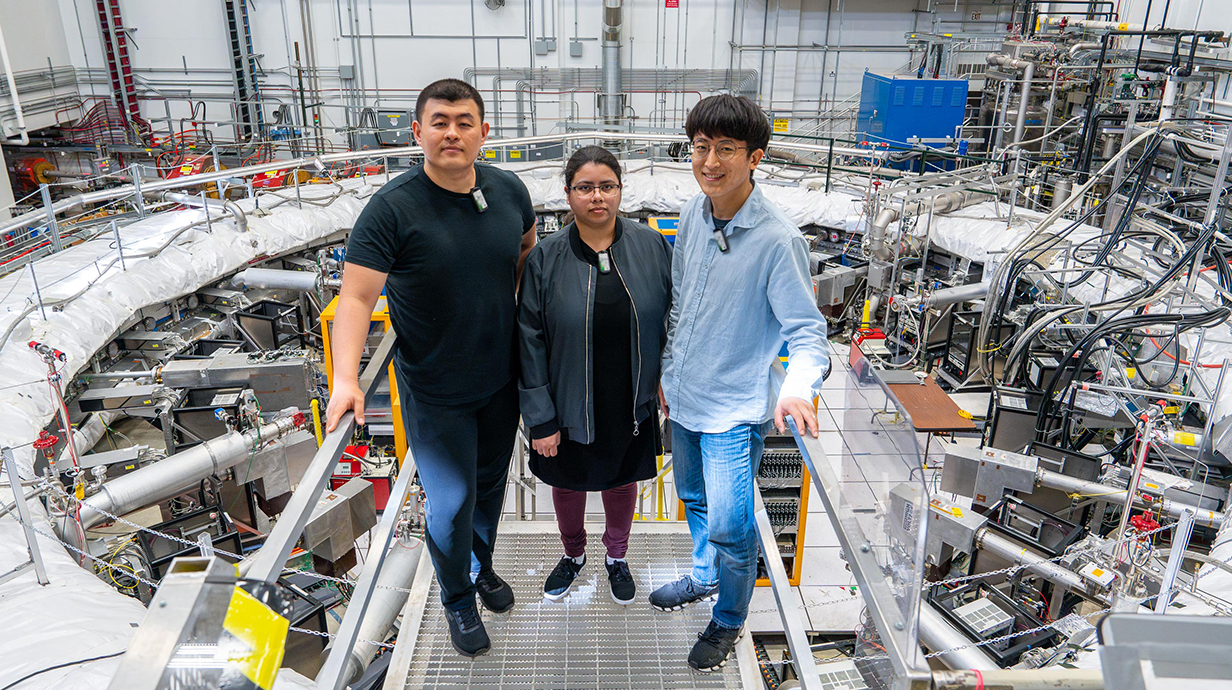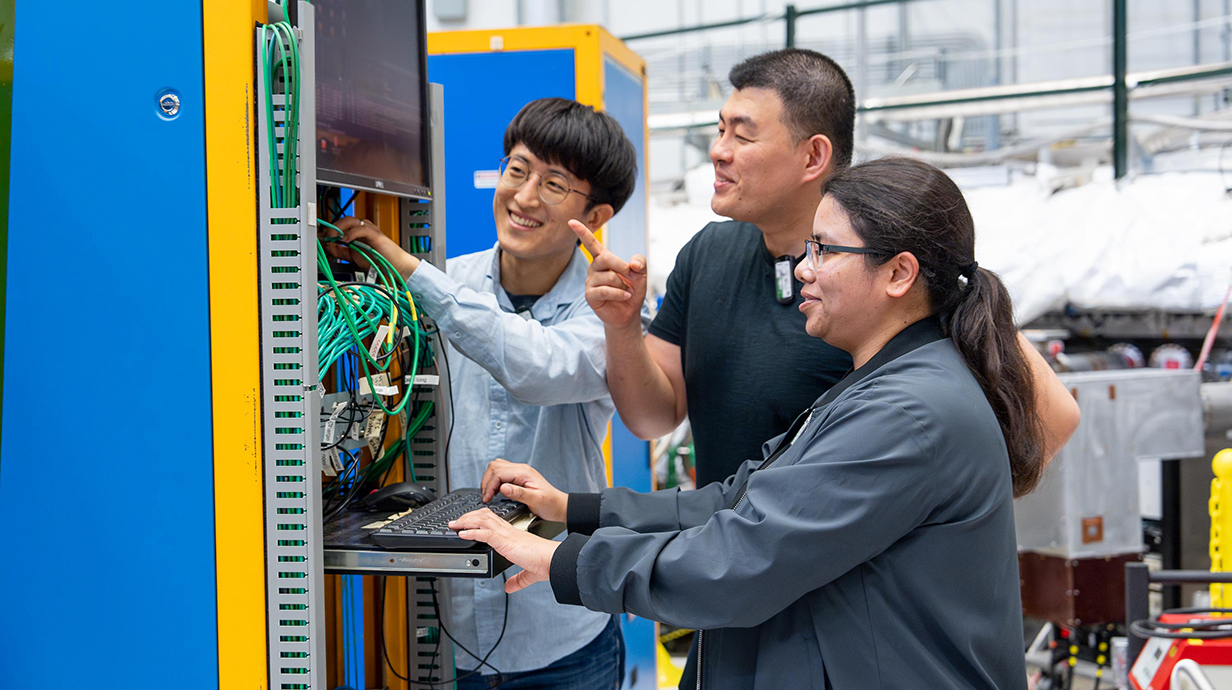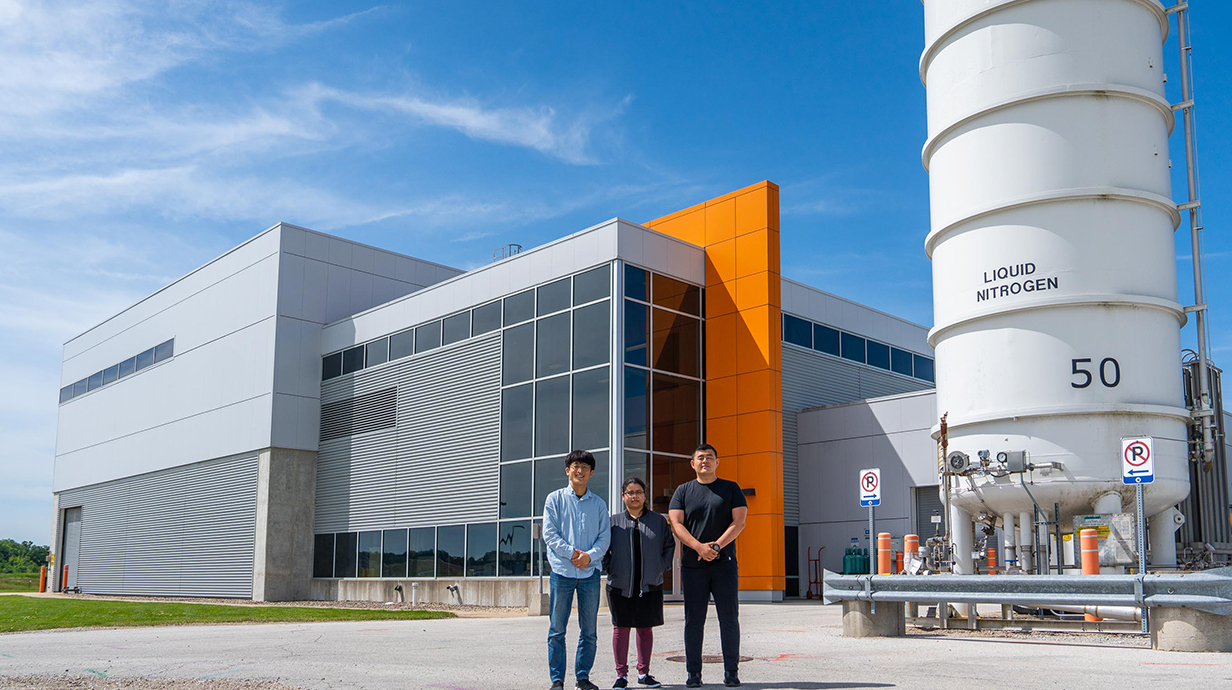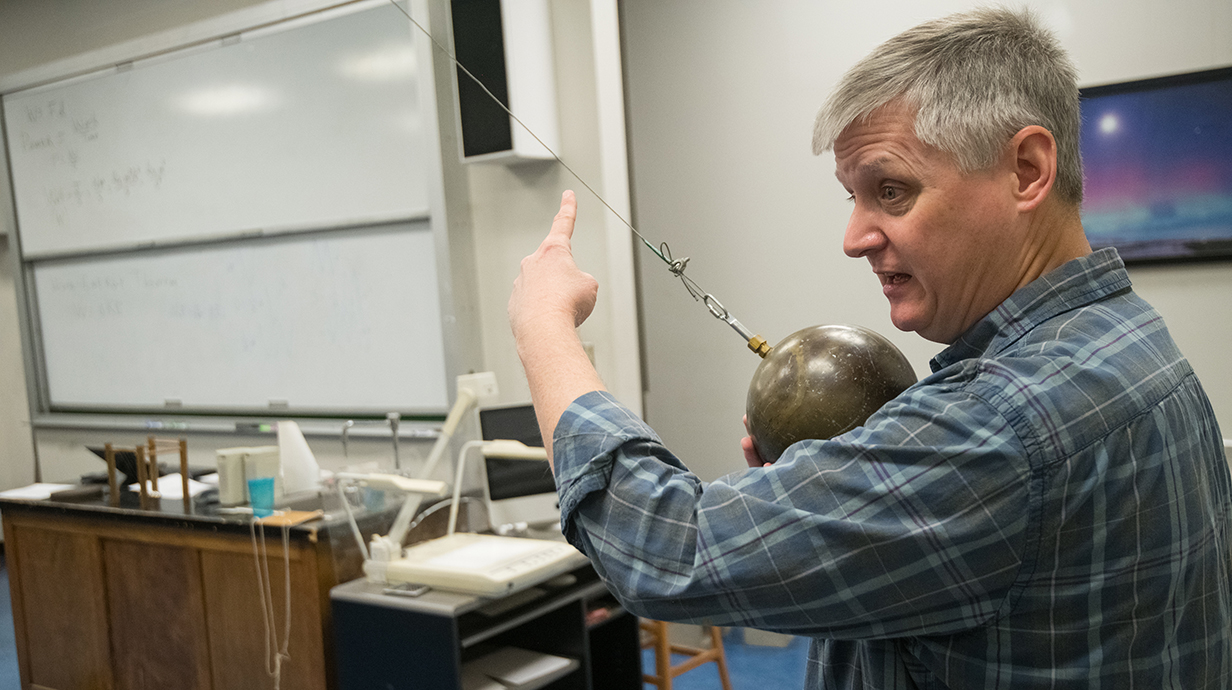Students, Postdocs Contribute to Groundbreaking Physics Experiment
Ole Miss team seeks answers to questions about Standard Model, dark matter

OXFORD, Miss. – Pushing the boundaries of what is known about the universe, a team of University of Mississippi students and postdoctoral researchers has contributed to one of the world's premier particle physics experiments, Muon g-2, at Fermi National Accelerator Laboratory.
Over the span of a decade, nine Ole Miss students and researchers working under physics professor Breese Quinn have been awarded coveted URA Visiting Scholars Awards and Intensity Frontier Fellowships. These awards allow the researchers to live and work at Fermilab and are awarded by the Universities Research Association, a consortium that operates the Chicago-based lab.
"Our Muon g-2 research group has won nine combined URA Visiting Scholars Awards and Intensity Frontier Fellowships since we became part of the consortium in 2012; there are only six institutions in the world who have had more than that – the universities of Manchester, Pisa, Washington, Chicago, Illinois Tech and Yale – big-time elite institutions," said Quinn, who is director of the UM Center for Multi-messenger Astrophysics.

Muon g-2, which completed its six-year run of collecting data in 2023, seeks to analyze the properties of muons – subatomic particles similar to electrons – with unprecedented precision. By measuring how much a muon "wobbles" in a strong magnetic field, physicists hope to find evidence that could lead to the discovery of new subatomic forces or particles not predicted by the reigning theory of particle physics, the Standard Model.
"This is one of the most important particle physics experiments in the world," said On Kim, a fourth-year postdoctoral researcher working on Muon g-2 as a URA visiting scholar. "We are trying to understand how the most fundamental particles work."
One of the challenges with studying muons' magnetic properties is that they are extremely difficult to produce and difficult to keep.
"They are only around for one-millionth of a second before transforming to an electron," said Kim, from Seoul, South Korea.
The publication of data generated in just the first year of Muon g-2 generated excitement, Quinn said, providing additional hints that the Standard Model may be incomplete or inconsistent with the measurement results.

"Our preliminary results made several top 10 science breakthrough lists in 2021, with the story reaching about 6 billion people globally," he said.
In 2023, an announcement revealed that Muon g-2 may have found evidence for the existence of previously unknown particles affecting the rotation of muons.
The full dataset analysis, which Quinn expects to be published in 2025, could lead to a new understanding of physics and potentially explain enigmas that current theories cannot account for, such as dark matter.
Byungchul Yu, a fifth-year doctoral student from Suwon, South Korea, is focusing his research on dark matter while working as a URA visiting scholar. His interest in physics began when he was a child.
"When I was very young – about 7 years old – I asked my father, 'What is the universe made of?'" he said. "When you're that age, you think your father is Superman and they know everything. My father said, 'I don't know that.' I was amazed that he didn't know."
Yu made it his mission to find the answer to that question. He asked his elementary and middle school science teachers, and his high school physics teacher.
"My physics teacher said, 'I'm terribly sorry, I don't know that, but please learn the answer and come back to see me when you do," Yu said. "Hopefully, I will be able to visit him and do just that."

Physics professor Breese Quinn demonstrates a basic physics principle during a class. Quinn encourages his students to apply for coveted fellowships to conduct research at Fermilab. Photo by Kevin Bain/Ole Miss Digital Imaging Services
Yu said his research, which he anticipates will publish next year, will set the standard for future dark matter studies as it is the first to examine ultralight dark matter with muons in a storage ring.
Baisakhi Mitra, a Kolkata, India, native who is working with Kim and Yu as a URA visiting scholar, successfully defended her dissertation at Ole Miss in May. Her experience at UM and work at Fermilab helped her land a postdoctoral research position with Northwestern University.
"In my new role, I'm joining another experiment at Fermilab, but I feel confident that I can contribute because of my work on Muon g-2," Mitra said.
Mitra's dissertation focused on a search for violations of the foundational principles of the two basic cornerstones of modern physics: quantum mechanics and the theory of relativity. She said Quinn's mentorship was a vital part of her successful defense.
"His confidence in me helped me gain confidence in myself," she said. "He was always there to guide me.
Yu and Kim also attribute much of their growth to Quinn's support.
"He is a really great supervisor and one of the best I've encountered," Kim said. "Not only does he have deep expertise across particle physics, but he also excels at providing the right mentorship for each student's personality and working style – pushing when needed, but also giving space to grow independently."
By
Erin Garrett
Campus
Office, Department or Center
Published
June 11, 2024
